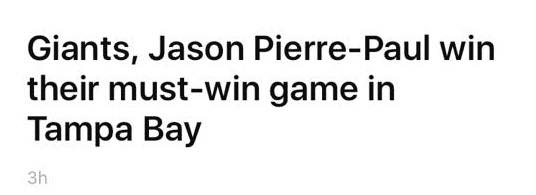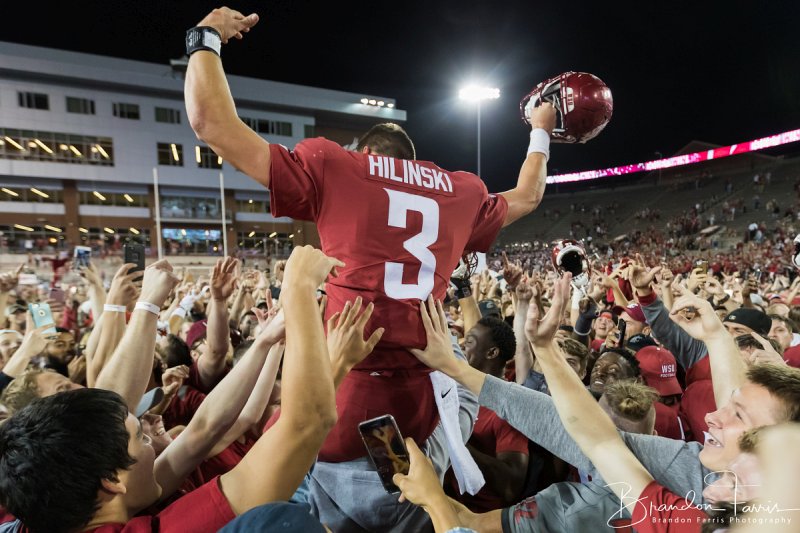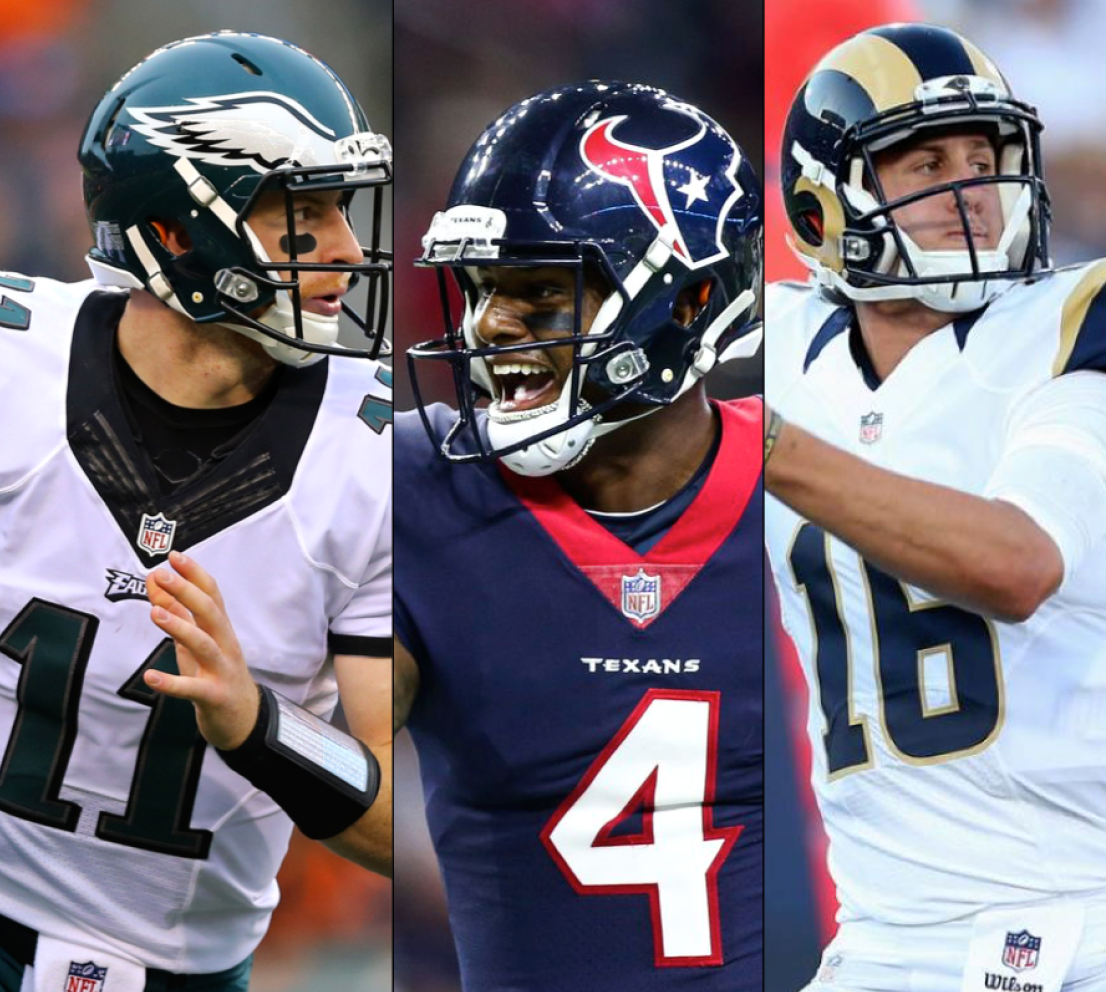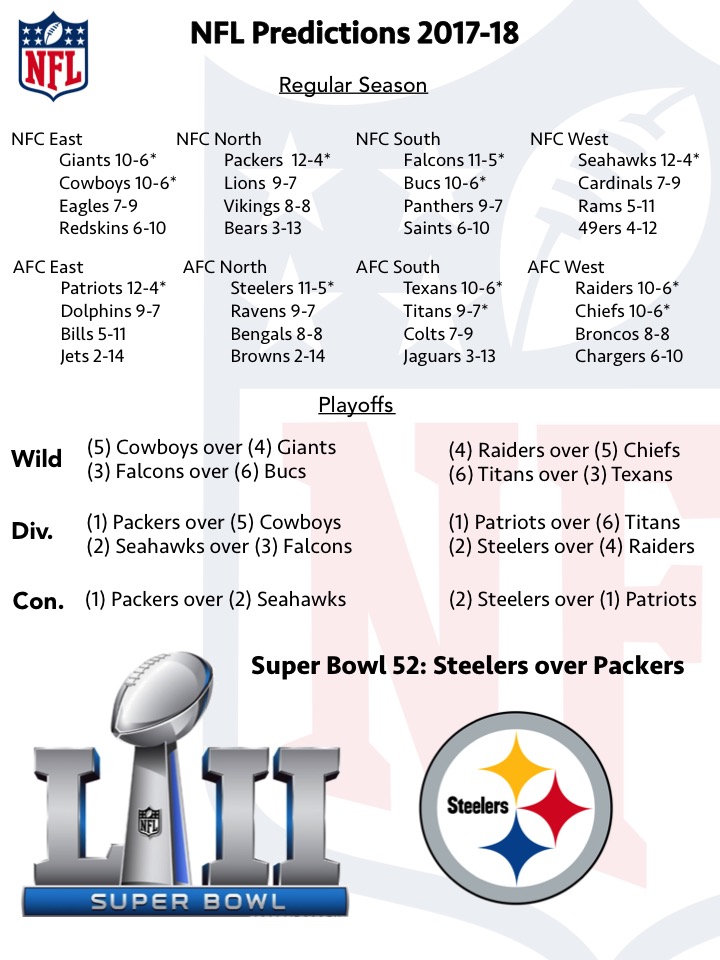This post was written on November 10, 2015. It covers a topic that’s still close to my heart today, so I figured I’d share it again:
Just a week or so ago, the New York Mets trailed the Kansas City Royals 3-1 in the World Series. One more win for the Royals and they would be crowned World Champions, sending the Mets home with nothing. In Game 5, that’s exactly what happened. New York lost a game they absolutely needed to have and their season was over. All 162 games, the ups and downs, the hard work, the injuries, etc. was all for naught because they didn’t win that one game to save their season. One might call that a must-win situation.
A week later, there was a team located not too far from them that faced the same situation: the New York Giants. The Mets could take solace in the fact that they weren’t the only ones that were forced to withstand such a large amount of pressure in just one game. Perhaps the Giants could have used tips from the Mets on how to handle such a big game. After all, the NFC East-leading Giants were playing the 3-4 Buccaneers in Week 9. This was a game they had to have. Or so ESPN would have liked you to think:

This kind of stuff really gets my goat. There were plenty of other ways to hype up this game other than resorting to lazy sports clichés that mean nothing. I understand stretching the meaning a little bit. If no team has ever come from behind a 3-0 series deficit, then I can accept calling Game 3 a “must-win” for a team already down two games. That can be a good way of highlighting the importance of one game, I get that. But this latest offense with the Giants went way too far. So far, in fact, that–per a recommendation of a friend–I had to write something about it AND the other sports clichés that we see abused all the time. I may be just one man, but somebody has to stand up against this lazy, useless sports reporting.
It starts with getting rid of “must-win,” quite possibly the worst of them all. If you’re wondering if you should use the term “must-win,” here’s a good rule of thumb: if the team plays a week later, don’t use it. Here’s an even better rule of thumb: don’t use it. We all can do math. We all know if a game is truly a must-win, so please stop trying to shove the importance of midseason NFL games down our throats with this lazy phrase.

What’s with Tampa Bay and must-win games?


Are you kidding me…..
There are LOADS more of other sports clichés thrown around that I could include, but here are some of the few that really make my skin crawl:
“On Pace For” stats
You already know what I’m referring to here. They rear their ugly heads a lot in the first quarter or half of the season when fans and writers alike want to be the first ones to find the next big thing.

Again, I understand the appeal. These stats do a decent job of showing how well a player is doing in a short period of time. My problem with them is that they have a nasty habit of including amazing records (e.g. most pass yards in a single season) that make the reader think the player has accomplished something. Being “on pace” to do something isn’t an accomplishment, but they give that impression. They’re a slippery stat that writers love to use to inflate a player’s achievements. They really grind my gears when used after just two or three weeks.


Obscure, useless statistics
It’s a good time to be alive if you’re a fan of statistics. We have access to deeper records and more types of statistics than ever before. We literally have people dedicated to researching and finding historical comparisons using statistics and that’s pretty cool. When it’s not so cool is when we end up with statistics like these:

Is this for real? A six-game record? And he’s not even the first to do it?? I could go on for hours about how much these kind of stats drive me up the wall. I could write a whole post on these, but I’ll spare you and just break these stats into a couple types that I always see pop up:
Type 1: Arbitrary cutoffs, too many conditions
A perfect example is this Porzingis stat. Who the hell decided 70 points and 50 rebounds are the measure for success through six games? Nobody, that’s who, because those cutoffs were set specifically so Porzingis could fit into this sad excuse of a statistic. Not to mention that six games is another meaningless cutoff or the fact that “this decade” is only five years old.

Again, why 90 rushing yards and 100 receiving? Why not 100 of each? Oh, because then he wouldn’t meet the criteria? Then don’t use the stat! If you have to keep lowering the requirements or are forced to make the achievement team-specific, then it probably isn’t worth posting. However, I’m willing to let 1990 slide as a cutoff year. That leaves 20+ solid years of football where plenty of players did amazing things. But I am seeing more and more cutoffs placed around five years ago. If something is the most/first to happen in five years, then that better be the only condition. When you start adding too many on (team, year, type, etc.) then the stat gets messy and meaningless.

Yeah….enough of this.
Type 2: Since player entered the league
This is another minor one and it doesn’t water down stats as much as Type 1, but I see it often enough that I felt the need to include it. A lot of impressive statistics are slapped with the condition, “since [insert player] entered the league.”

I just see this phrase thrown out a little bit too often for my taste. I feel like it’s a little unfair to start tracking a certain statistic from the point where that player entered the league. Players go through their natural ups and downs in their career and if they start on an up, you can pretty much point out whatever you want using this condition. It’s just another situation where the statistic if formed to fit the player and not the other way around.
Saying a team should/could be [insert record]
Remember when I said must-wins might be the worst of these bunch? Well it’s directly competing with this one, which we hear over and over in sports discussion. We constantly either credit or blame teams for close games and use that to change their record. We just change it! “We really should be 6-0 if it weren’t for that missed field goal.” “They could easily be 0-4 if it wasn’t for a few lucky plays late in that one game.”

What bothers me about this overused, meaningless phrase is that it ignores one of the fundamental aspects of the NFL: most NFL games are close. If you decide to the change the result of one game based on one score, you’re changing everything! This became unbearable around Week 6 when listening to discussions about the underachieving Baltimore Ravens. The Ravens were 1-5 and as if that record didn’t paint a bad enough picture, analysts and fans alike decided to mention that they could easily be 0-6 because their one win was a 23-20 overtime victory over Pittsburgh. If they hadn’t survived that one close game, they would be 0-6. This sounds so good and fits so well into an argument if you’re trying to point out how bad the Ravens are. Except it COMPLETELY ignores the fact that literally all six of their games were decided by six points or less! If you’re going to tell me the Ravens could have been 0-6, I could just as easily argue they could be 6-0 using the same logic. They’re 1-5 because they lost five games. Let’s talk about that and not what they could be.

I can’t stand this phrase and it’s used all the time. Don’t get me wrong, I’m not saying that a team’s record defines them, because it doesn’t. We can talk about how a team looks better or worse than their record indicates. We can talk about why a team might clinch a playoff spot despite starting 3-4. But stop changing a team’s record just to serve your argument. Stop using close games as a way to discredit success. Most games are close. This is another lazy, played out phrase that we use as a crutch and it needs to go.
Historical records between teams
I see this more in college football than the NFL, especially when two teams that never play are selected for a bowl. For some reason, we like to include the record between this teams, even if they’ve only played six times. Why do we do this? Because it’s an interesting tidbit? I suppose so, but let’s leave it at that. Please don’t tell me that Air Force could have an edge over Western Michigan in the Idaho Potato Bowl just because Air Force beat WMU pre-1990 (just an example).

I’m generally okay with using recent success with teams that still have the same core. For some reason, the Giants (with Eli and Coughlin) seem to be more competitive with the Patriots (with Brady and Belichick) than other teams. We just have to make sure that the matchups are plentiful and recent enough that the main personnel are still involved. Even then, it can be a stretch to say one team has an edge just because they seem to play the other team well over the past six games. A lot can change in just a couple years.

Careful there, Dan. Are you sure it is Coughlin that is good at coaching against Belichick? What about Brady vs. Eli? The defense? The weather? There’s just too many factors at play. You’re just cherry-picking one of those factors to fit a narrative.
Keys to the game
I understand we need things to talk about during the game, but c’mon. We can do better than this.

Too often do these keys come down to one thing: play well. In the NFL, the commentators’ favorites are avoid turnovers, have a good pass rush, and score touchdowns instead of field goals. In other words, do well in the important aspects of the game. They don’t mean anything and they don’t enhance my enjoyment of the game, so get rid of them.
Of course, they aren’t always bad:

_______
These are rough. To be fair, even I’ve failed to resist using some of these (yes, even me). We can all do so much better. We can predict, discuss, and have fun with sports without being lazy. Like I mentioned before, these are only a few of a bunch of useless sports clichés we see way too often. Which one of these bug you the most and what are some others that belong on the list?

Phew, I was on the edge of my seat….

























 Then, let’s take Joe. Joe, in his 50s, is a much different type of NFL fan, but his love for the game matches Marcus’ and is rooted in memories of watching countless games with his father when he was young. He relishes the aggressiveness of football and its undeniable tie to American culture. However, the game today is far different from the one he watched as a young man. Safety precautions have turned the game “soft” in his mind and he often quips that “they’ll be playing flag football in a few years.” He watches the game the only way he knows how, on regular and reliable cable. He also makes a point to attend a couple of games in person each season. Similar to Marcus, he too notices the much-too-frequent commercial breaks and thinks the sport has gotten way too “corporate.” Another thing that bothers Joe is the boisterous and arrogant players that have populated the league. He prefers players to “act like they’ve been there” when scoring and crediting the team, rather than soaking up the adoration of fans. His biggest complaint? The NFL and media’s apparent tolerance of Colin Kaepernick’s anthem protest, which went against everything he stands for. He wanted the NFL to rebuke Kap’s actions and vehemently believes the dip in ratings is due many feeling the same disgust that he feels. Despite all this, Joe still watches the NFL and roots as hard for his team as he did 30 years ago. However, each season Joe is hesitant to pour more money into tickets as the league changes from what he once knew.
Then, let’s take Joe. Joe, in his 50s, is a much different type of NFL fan, but his love for the game matches Marcus’ and is rooted in memories of watching countless games with his father when he was young. He relishes the aggressiveness of football and its undeniable tie to American culture. However, the game today is far different from the one he watched as a young man. Safety precautions have turned the game “soft” in his mind and he often quips that “they’ll be playing flag football in a few years.” He watches the game the only way he knows how, on regular and reliable cable. He also makes a point to attend a couple of games in person each season. Similar to Marcus, he too notices the much-too-frequent commercial breaks and thinks the sport has gotten way too “corporate.” Another thing that bothers Joe is the boisterous and arrogant players that have populated the league. He prefers players to “act like they’ve been there” when scoring and crediting the team, rather than soaking up the adoration of fans. His biggest complaint? The NFL and media’s apparent tolerance of Colin Kaepernick’s anthem protest, which went against everything he stands for. He wanted the NFL to rebuke Kap’s actions and vehemently believes the dip in ratings is due many feeling the same disgust that he feels. Despite all this, Joe still watches the NFL and roots as hard for his team as he did 30 years ago. However, each season Joe is hesitant to pour more money into tickets as the league changes from what he once knew.





